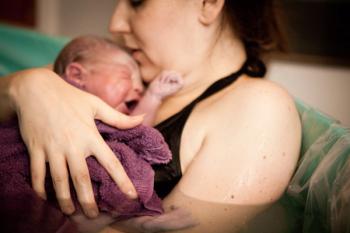
Endometriosis linked to higher pregnancy rates vs other infertility causes
A large-scale study finds women with endometriosis are 4 times more likely to conceive than those with other infertility diagnoses, offering new hope for patients.
Pregnancy rates are 4 times higher in patients with endometriosis vs those with other causes of infertility, according to a recent study presented at the 41st Annual Meeting of the European Society of Human Reproduction and Embryology (ESHRE).1
Understanding endometriosis and fertility
The trial included over 4 million women in England across 30 years, providing hope for endometriosis patients with plans to conceive. Lucky Saraswat, PhD, senior lecturer at the University of Aberdeen, hypothesized that increased awareness about endometriosis may lead women to seek fertility care sooner, increasing the odds of a successful pregnancy.1
“Endometriosis can vary in how it affects fertility,” said Saraswat. “Women with milder forms may retain good reproductive potential, especially if the condition is diagnosed and managed early. There’s also moderate-quality evidence suggesting that laparoscopic surgery can improve pregnancy rates in some with endometriosis.”1
Symptoms and burden of endometriosis
Endometriosis significantly impacts women’s quality of life, with symptoms including chronic pelvic pain, heavy bleeding, nausea, fatigue, and depression or anxiety.2 Trouble getting pregnant has also been noted as a symptom.
Currently, methods of preventing endometriosis have not been discovered. However, natural progression and long-term symptom burdens may be reduced through enhanced awareness, alongside early diagnosis and management.2
Diagnosis and infertility rates
Researchers from the Centre for Reproductive Health at the University of Edinburgh conducted the largest population-based study assessing women with infertility or symptoms related to endometriosis.1 The primary care, secondary care, and maternity records of participants were linked.
There were 4,041,770 women aged 13 to 50 years presenting to primary care with infertility or other endometriosis symptoms in the cohort, 111,197 of whom were classified as having endometriosis based on a surgically confirmed diagnosis through laparoscopy or laparotomy. Overall, female infertility had a prevalence of 48.9 per 1000 women. 1
The highest infertility rates were observed among women aged 30 to 39 years. Surgically confirmed endometriosis was reported in 6.1% of women with infertility, with infertility before diagnosis reported by 57.4% of these patients. This highlighted delays in identifying and diagnosing endometriosis.1
Improved conception rates compared to other infertility causes
Investigators noted that the data supports prior trials linking endometriosis to fertility challenges, as the odds of infertility were increased 2-fold among women with vs without the condition. However, a 4-fold increased chance of conception was reported in patients with endometriosis vs other causes of infertility.1
Achieving at least 1 pregnancy during the study period was reported by 40.5% of women diagnosed with endometriosis regardless of infertility status. This indicated improved fertility rates compared to tubal factors, ovulatory dysfunction, and unexplained infertility.1
Implications for fertility counseling
Saraswat also noted that other factors such as age influence infertility. However, these findings allow clinicians to provide enhanced fertility counseling to women with a recent endometriosis diagnosis. This includes informing them about their odds of conception and how the overall rates and outcomes of pregnancy compare to other infertility sources.1
“These insights can empower women to make informed reproductive decisions”, said Saraswat. “They also provide a strong foundation for future research into how factors such as disease stage, site, surgical treatment and use of assisted reproduction influence pregnancy outcomes in women with endometriosis.”1
References
- Against the odds: Endometriosis linked to four times higher pregnancy rates than other causes of infertility, new study reveals. European Society of Human Reproduction and Embryology. July 1, 2025. Accessed July 2, 2025. https://www.eurekalert.org/news-releases/1088675?
- Endometriosis. World Health Organization. March 24, 2023. Accessed July 7, 2025. https://www.who.int/news-room/fact-sheets/detail/endometriosis#:~:text=Overview,period%20and%20last%20until%20menopause.
Newsletter
Get the latest clinical updates, case studies, and expert commentary in obstetric and gynecologic care. Sign up now to stay informed.











